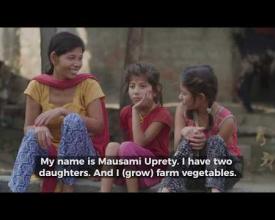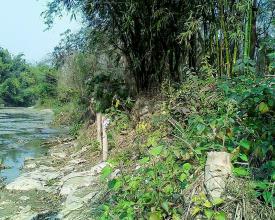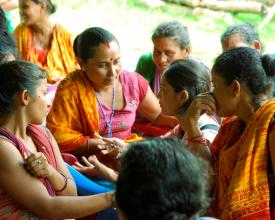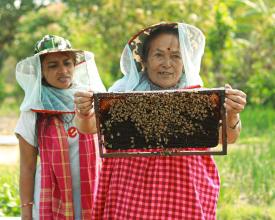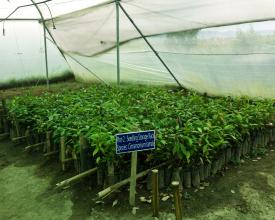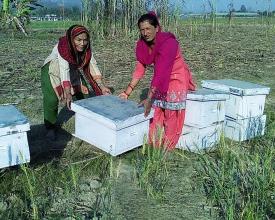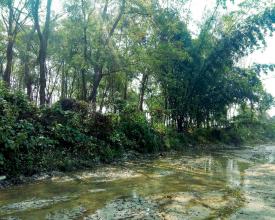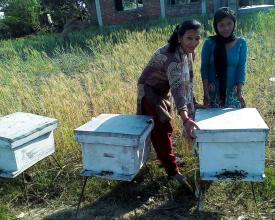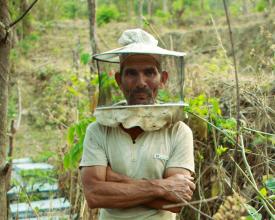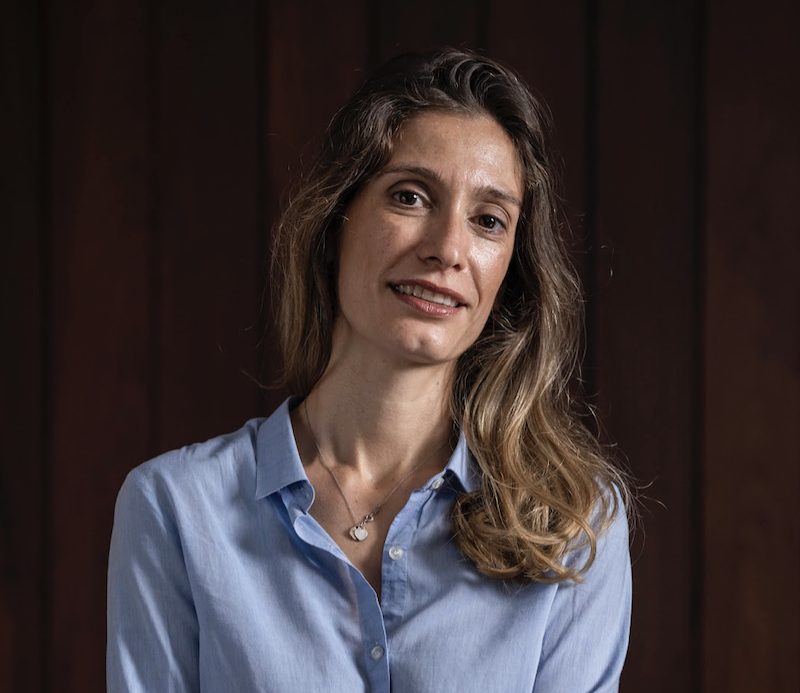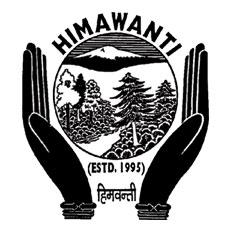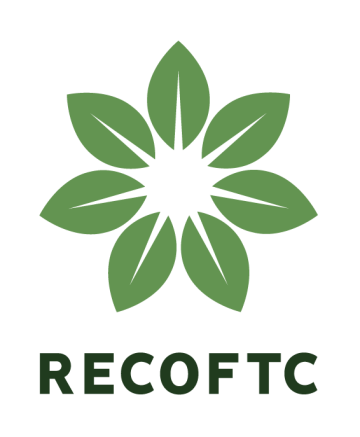
Improving livelihoods, addressing gender inequality and adapting to climate change in a women-led community forest in Bishnupur, Nepal
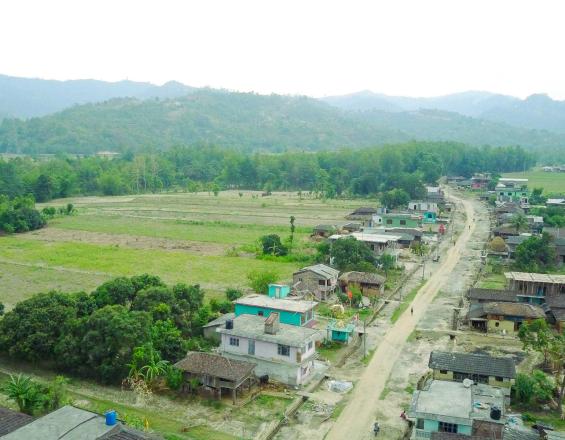
In 2014, RECOFTC established a project in Bishnupur to show how community forestry empowers women and supports adaptation to climate change. Community forestry is a broad term for approaches that empower local people to manage, protect and benefit from forests. The project was developed with Bishnupur’s women-led community forest user group. RECOFTC, local government and sectoral agencies supported the group to apply participatory approach in assessing climate vulnerability, and identifying and implementing priority actions. They protected farmland from floods by planting trees, installed bio-embankments to stabilize collapsing river banks, invested in wells to improve water supplies, and introduced agroforestry and beekeeping to diversify livelihoods. The community improved resilience and reduced its vulnerability to climate and other shocks. The project empowered women as leaders, decision makers and financial beneficiaries. The transformative impact led to women in neighbouring communities adopting similar practices.
Context
Challenges addressed
Environmental
Sugarcane production reduces soil quality and water availability. Deforestation and land-use change exacerbate impacts of climate change. These impacts include annual flash floods that erode riverbanks, and have led to the loss of around 30 hectares of land. Irregular seasons and variable rainfall compound the insufficiency of water resources. Invasive species threaten native species in the forest.
Social
Gender inequalities are marked in Bishnupur, with unequal household workloads between men and women. This gap has widened as water sources have diminished and women have had to spend up to extra two hours daily collecting water. Women also have limited voice in decision making spaces. Unequal access to water resources between relatively well off and poorer households has created social tension.
Economic
Poverty is widespread. Incomes are falling from the main cash crop—sugarcane. Reliance on agriculture increases vulnerability, as farm productivity is declining.
Location
Process
Summary of the process
The building blocks are the three major phases of community-forestry-based climate change adaptation. They follow a sequence. First comes the vulnerability assessment and identification of adaptation topics. Next is the feasibility assessment for specific adaptation options. In this second phase, the potential integrated adaptation options are identified, and priorities and financing opportunities are explored. As part of this phase, project proposals are then developed and engagement with partner institutions takes place. In the third and final phase, interventions are implemented. Activities prioritize poor households, disadvantaged ethnic groups and castes, and women. Participatory monitoring takes place throughout all three phases of the process. The process is completed by conducting an evaluation.
Building Blocks
Participatory assessment of climate vulnerability
The objective is to understand the vulnerabilities to climate change impacts. Following a free, prior and informed consent process with stakeholders, the community level vulnerability assessment identifies climate threats and impacts, assesses threats and impacts to community livelihood assets and identifies vulnerabilities and vulnerability response topics.
In Bishnupur, a locally based coordinator supported the assessment for six months. A female field worker from the Himalayan Grassroots Women's Natural Resource Management Association consulted women stakeholders. It was perceived as inappropriate for male workers to engage with women.
A series of matrices allow for clear collection, organization and evaluation of climate change and socioeconomic information to assess vulnerabilities. Each matrix builds on information captured in the previous one. The climatic variables and exposed sectors analysed in the matrices depend on site specific factors.
The matrices are completed using primary and secondary data. Primary data comes from participatory rural appraisal and participatory action research. Community forest user group’s guidelines and operational plans, district-level government offices, and forest and land use research institutes provide secondary data.
Enabling factors
Community forest user groups in Nepal use participatory processes and hold socio-economic and biophysical information needed for vulnerability assessments. Stakeholders must be willing to work together—local government and sectoral agencies such as the District Forest Office supported the process in Bishnupur. Having an experienced facilitator who is sensitive to the local context is key. They must be familiar with complex aspects of climate vulnerability under assessment and able to create space and opportunities to recognize the relevance of community voices.
Lesson learned
A lack of empirical data is a challenge for implementing vulnerability assessments at community and local levels. Participatory tools to map climatic trends can help overcome the challenge to an extent. Empirical evidence remains important to analyze and validate information community members share.
For example, the Bishnupur community interpreted climate trends as leading to drought. The days of rainfall had decreased but the meteorological data showed that overall rainfall had increased. After informing the community about the finding, the proiect prioritized water management and capture as a key intervention area.
Climate vulnerability assessment processes can be an opportunity to raise awareness about climate change among community members and other stakeholders. Representatives from local government and sectoral agencies were invited in the vulnerability assessment process in Bishnupur. They contributed to the analysis and benefited from a nuanced understanding of how climate change is affecting communities and what actions to take. This helped to secure their support to implement adaptation interventions.
Co-production of adaptation intervention feasibility assessment
A feasibility assessment uses input from community forest user group members and other stakeholders to identify adaptation interventions.
First, community forest user group members and facilitators review the climate vulnerability assessment and the identified intervention topics. The assessment identifies at least three topics based on detected climate threats, vulnerabilities and adaptive capacities. Each topic is a broad adaptation strategy with actions.
Then, facilitators use a template for evaluating topics to assist community forest user group members in seeking technical expertise, and collate information into a single ‘snapshot’ document to enable selection of a more detailed action. Facilitators can use the climate vulnerability assessment to draft information on existing livelihood assets in advance.
As a final step, facilitators work with community forest user group members to list expertise and experts for the intervention topics. Facilitators update the list, as needed, considering a broad range of stakeholders and service providers. Final matrices list response options under each topic, and are completed based on information target participants provide. This section may require gathering information from technical consultants and/or service providers.
Enabling factors
While vulnerability assessments should be participatory, feasibility assessments require technical expertise to ascertain which options are practical and effective. This likely involves drawing upon engineering, hydrological, agricultural and other line agencies or consultants. Involving governmental and non-governmental organizations in a vulnerability assessment will reduce efforts needed for the feasibility assessment, by providing insights into potential measures already available or implemented, required technologies, costs and possible sources of support.
Lesson learned
Community forest user groups can conduct feasibility assessments, with technical support provided by supporting agencies. Leadership by women ensures that the interventions sufficiently consider the impacts and benefits to them and other marginalized groups such as poor households and ethnic minorities.
Climate adaptation support is mandated to many local-level line agencies in Nepal. For this reason, identifying and engaging technical agencies is a valuable opportunity to develop plans for co-financing. Requests for technical inputs strengthen the case for financial support for interventions.
Implementation of ecosystem-based adaptation interventions
The aim is to use nature-based interventions identified by the feasibility assessment to address sources of climate vulnerabilities. To do this, the community forest user group leadership mobilizes resources and people, and works with partner organizations identified in the feasibility assessment to access resources and technology.
In Bishnupur, the women leaders of the community forest user group worked with RECOFTC to buy around 300 mango and lychee tree seedlings at subsidized rates from the regional horticulture development centre. RECOFTC provided beehives and training on beekeeping.
To address water shortages and protect existing water sources, the community forest user group accessed technical and financial support from the government’s Bagmati Irrigation Project to install a deep well. RECOFTC and the community forest user group covered the shortfall in finance.
To stabilize the riverbank, the user group members built a retaining wall of stones and sandbags topped with live bamboo and other plants along a kilometre stretch of the river. They planted 200 bamboo rhizomes and 4,000 fodder-crop seedlings from the District Forest Office and the District Soil Conservation Office, together with locally available fast-growing and multipurpose grass.
Enabling factors
The process was locally led. Local ownership contributed to Bishnupur community forest leaders exploring potential support on their own. Third-party facilitation is important, as a community’s proposals may not be the most climate sensitive, or optimal for nearby communities and their own climate resilience. Policy support is crucial. For example, Nepal’s National Adaptation Programme of Action states that 80 percent of resources for climate adaptation should go to local level, which made it easier to access finance.
Lesson learned
A community forest user group provides a robust, self-governing institution with, to some extent, resources required to implement interventions. Such groups have strong networks, which can help them to access further resources and technical support as necessary.
Climate adaptation led by women helps to address both gender inequality and climate vulnerability, particularly that of women and the poorest members of a community.
Impacts
The project increased tree cover and diversified incomes by providing 300 mango and lychee trees, 1,000 butter trees (local name chiuri) and 500 Indian bay trees (local name tejpat). Annual incomes rose by an average of 45,000 rupees (US$450), or around 18 percent, for six families that received beehives and technical support to produce honey.
Boring a deep well improved access to water for 64 households for domestic and agricultural use on 30 hectares, reducing vulnerability to variable rainfall. Relations with local authorities improved as a government-led irrigation project co-funded the well.
The project stabilized a 1-km-long stretch of riverbank, using sandbags and stone reinforced by bamboo plantation, to reduce erosion during heavy rain or flash floods. Since 2015, there has been no riverbank erosion despite annual flash floods. There has been less silt and debris deposited across the village’s 45 hectares of forest, farm and settlement.
The project enhanced community cohesion, mitigating social tension over water access. It reduced gender inequality and empowered women as climate adaptation leaders. The preparation and implementation of a climate change response component in the community forest management plan helped mainstream adaptation and ensure the forest stores an estimated 888 tons of carbon. Another 39 communities in three districts are now replicating these efforts
Beneficiaries
- Eleven women leading the Bishnupur community forest user group and 63 families (359 people) who are members of the group
- 778 people active in community-based enterprises supported by other projects.
Sustainable Development Goals
Story
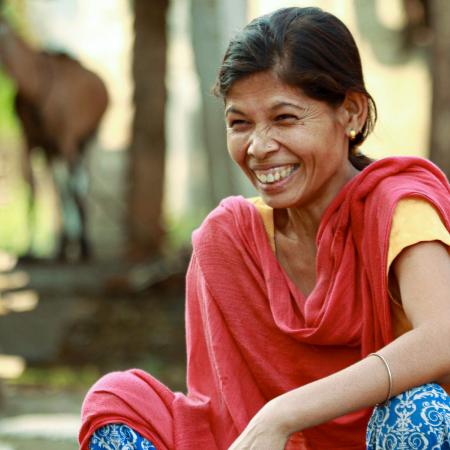
Mausami Uprety and her husband Wakil Mainali live in Bishnupur with their two young daughters. Before the Regional Community Forestry Training Centre for Asia and the Pacific (RECOFTC) implemented its project there, the family was living in extreme poverty.
“We grew vegetables and worked on others’ farms for our livelihoods,” says Uprety. “It was very difficult in the past. There was no work and no source of income that could be used in times of need.”
Climate change added to the family’s precarious existence. Uprety says that her community had been affected by increasingly worse flooding and land degradation. But when she joined the Bishnupur community forest user group, other women members told her about the opportunities that beekeeping could bring. With technical and management capacity building support from RECOFTC, Uprety and five other new beekeepers were able to ensure that their businesses were sustainable.
“I found beekeeping is a low input and high-income enterprise,” she says. “It provides regular income. This is good for poor families.”
“I had only one goat before,” she adds. “After I started to earn from beekeeping, I was able to increase the herd of goats. Honey has also been a source of nutrition for my children.”
Beekeeping and other agroforestry practices mean that farmers like Uprety no longer have to rely on only one source of income.
“Instead of planting sugarcane, I started planting mango on my land,” says Bishnu Mahat, executive committee member of Bishnupur women’s community forestry user group. “Sugarcane uses too much water and is drying the land, while reducing productivity. I am expecting that mango will provide a better return than sugarcane and will diversify my income source.”
The success of RECOFTC’s Trees and Bees project in Bishnupur has spread. Government-led programs are replicating the project in neighbouring Siraha and Saptari districts. The programs now support others who are struggling to sustain their livelihoods by providing training and technical assistance to start beekeeping.

